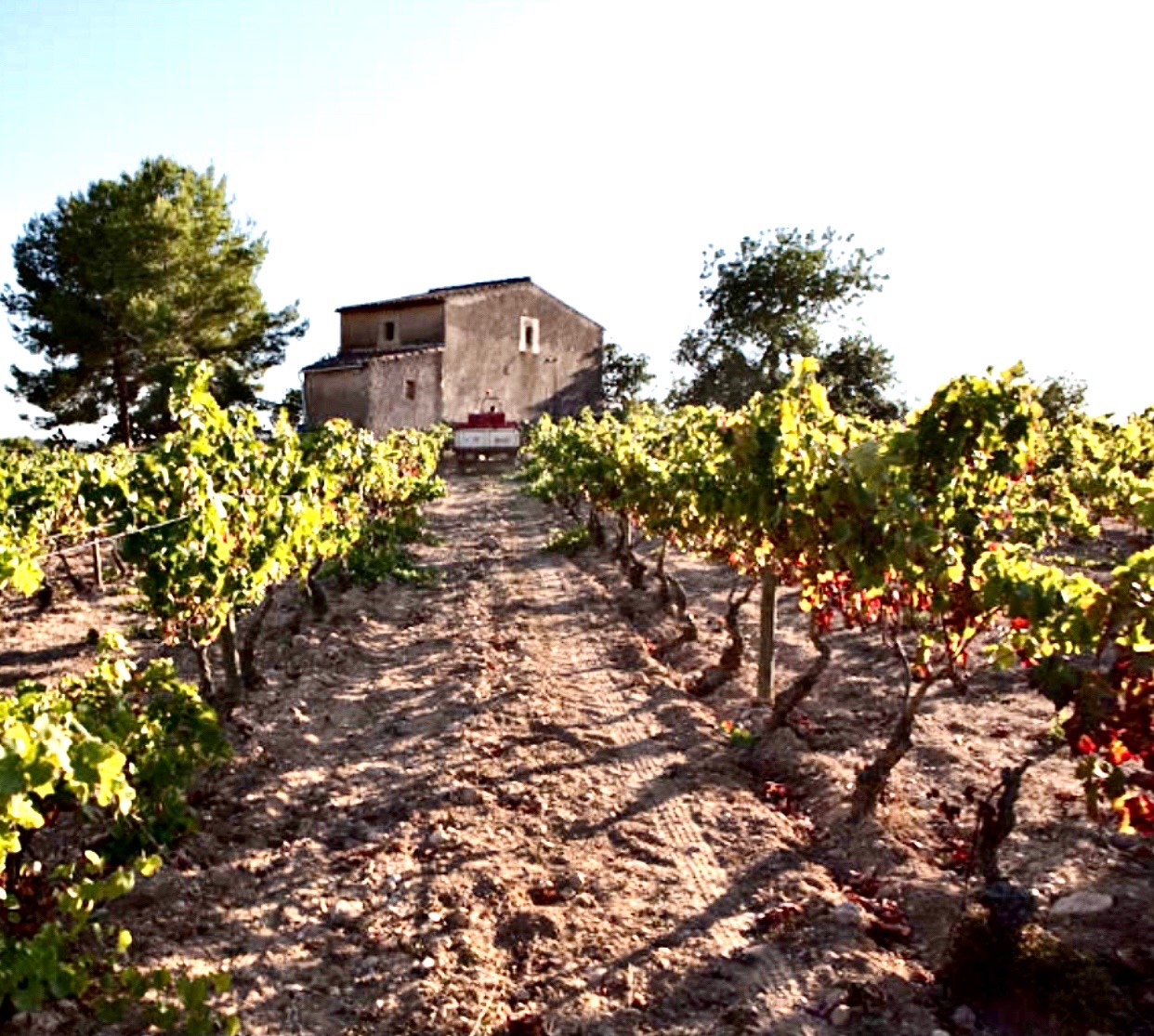
Within the Tarragona province of Catalonia, in the northeastern corner of Spain, lies Alt Camp, a traditional and historic agricultural region. Its name, meaning high field, refers to the area’s elevated landscape of mountains, plains, forests and rivers. This unique terrain, just 12 miles from the Mediterranean Sea, provides a beautiful backdrop for a variety of wildlife and fauna, as well as perfect conditions for growing agricultural products like vegetables, cereals, nuts and fruits, including wine grapes.
Dasca Vives, situated in the heart of Alt Camp, is a small farm owned by a husband and wife team: Josep Dasca, an agricultural and forestry engineer, and Alba Vives, an enologist by training. The couple farms 15 hectares of family-owned land according to biodynamic principles, following the rhythms of the lunar calendar while using chemical-free fertilizers and natural pest control, and with the application of preparations based on minerals, plants and animal parts.
The vineyards of Dasca Vives are home to vines as old as 65 years that produce wines from native grapes like Macabeu, Cartoixà, Vinyater, and a local strand of Tempranillo called Ull de Llebre. International varieties such as Garnacha and Cabernet Sauvignon are also grown in smaller amounts and blended into an assortment of spicy reds.
The grapes of Dasca Vives are treated with the same respect in the winery as in the vineyards, without the use of additives during the winemaking process except for a small amount of sulfites added to a few of the wines to ensure against spoilage.
We chatted with Alba Vives by email to find out more about these superb natural wines.
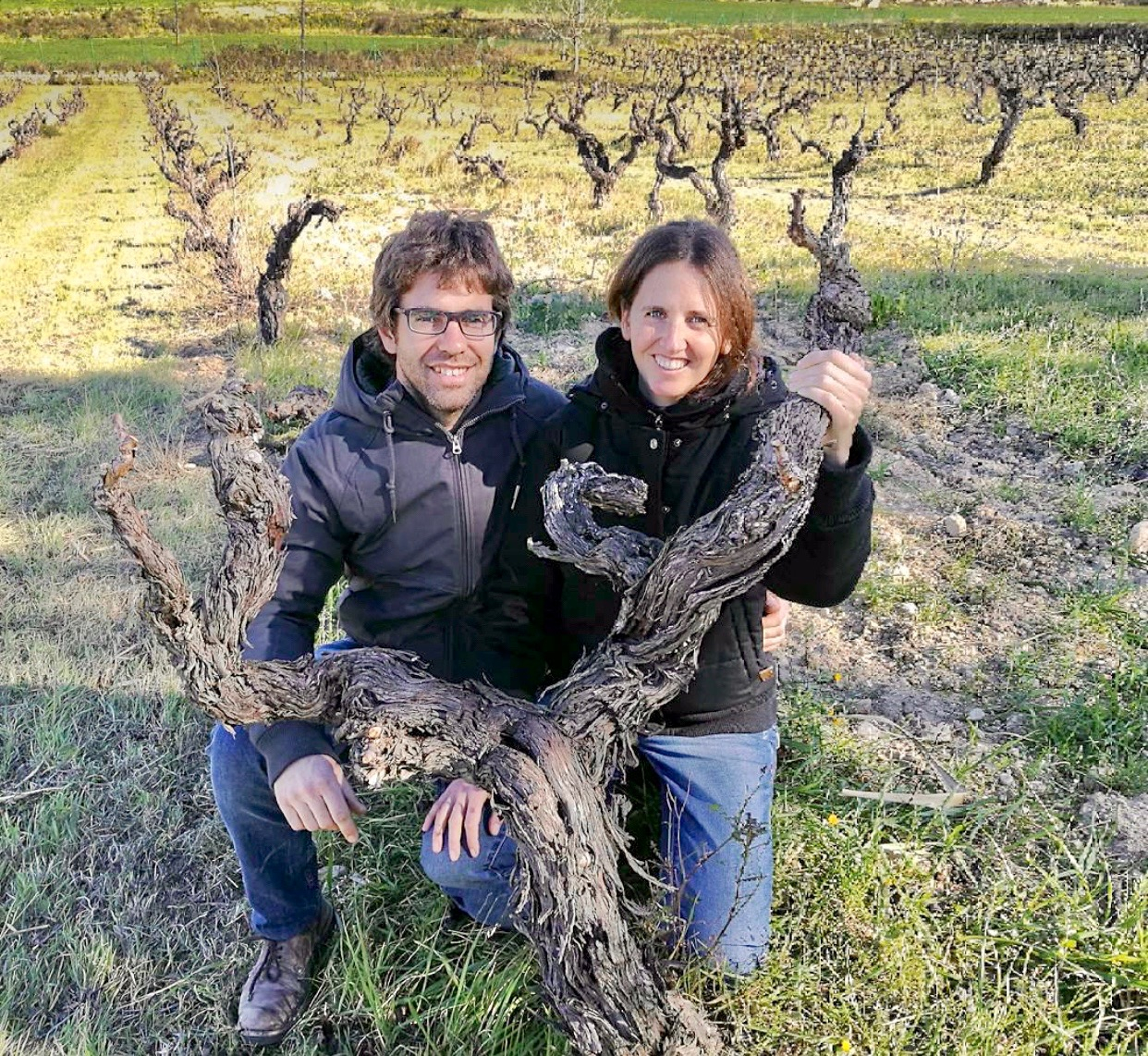 Lisa Denning: Can you tell us a little bit about your background and when and how you got interested in winemaking?
Lisa Denning: Can you tell us a little bit about your background and when and how you got interested in winemaking?
We come from a family with a long agricultural history in our region, our grandfathers made and sold wine at home and our fathers in the village agricultural cooperative. We are restoring an old unused farmhouse and we produce and sell the wine from the grapes of our own vineyards.
Dasca Vives is located in an area of Catalonia known as the Alt Camp, 20 km from the sea in the Tarragona appellation. Can you tell us a little bit more about Tarragona, and in particular, Alt Camp, in terms of its natural environment?
The Alt Camp is a traditional agricultural region where you can find the typical Mediterranean crops such as vines, olive trees, almonds, carob trees and cereals. The fields are little areas and are often surrounded by forest and streams. The soil is calcareous and the influence of the sea is present with the gentle and humid wind of summer afternoons that cools the plants in the hottest months of the summer.
What is your philosophy of winemaking?
In the Alt Camp region we have inherited a wise deeply rooted peasant farming culture which even today is visible in the landscape of tended fields and dry stonewalls. When working the land, the premise that we adhere to is respect for the environment. We try to maintain and if possible enhance the biodiversity of different species of plants and animals. In the vineyard, for example, we respect the microorganisms that will subsequently effect fermentation. We intervene as little as possible with the soil, leaving it covered by natural vegetation, and mixing it with
the leftovers from pruning.
In this undertaking we work according to the criteria of biodynamics: following the rhythms of the biodynamic calendar, with the concept of nature as a whole macrocosm, and applying different preparations based on minerals, plants and animal parts in order to revitalise the soil, the plants, and also the people it feeds.
We harvest fruit at optimum ripeness. The grape harvest is undertaken manually, in 20 kilo boxes which allows us to make the best selection of grapes.The process of winemaking begins in the vineyard. Once the grapes arrive at the winery, we take special care of the fermentations and macerations to retain the aromas while the sugars are converted into alcohol. We do not add yeasts for fermentation; we use natural yeast contained in the grape skins. We do not use additives, except for a small amount of sulphites in some wines, to help it to keep. We leave the wine all winter in Inox tanks (or in oak and chestnut barrels for the aging of wines like the Xerric and Crit), and we use battonage especially for the white wines. We do not use clarifying agents, we clarify the wine with the cold.
Normally the wines make the malolactic fermentation in the Inox tanks at the end of the autumn or at the beginning of the spring. During the spring we start to bottle the wine and we use only a cellulose filter to filter them. We use natural cork from Catalonia for the bottles. After bottling the wine, we prefer to wait some months before selling it.
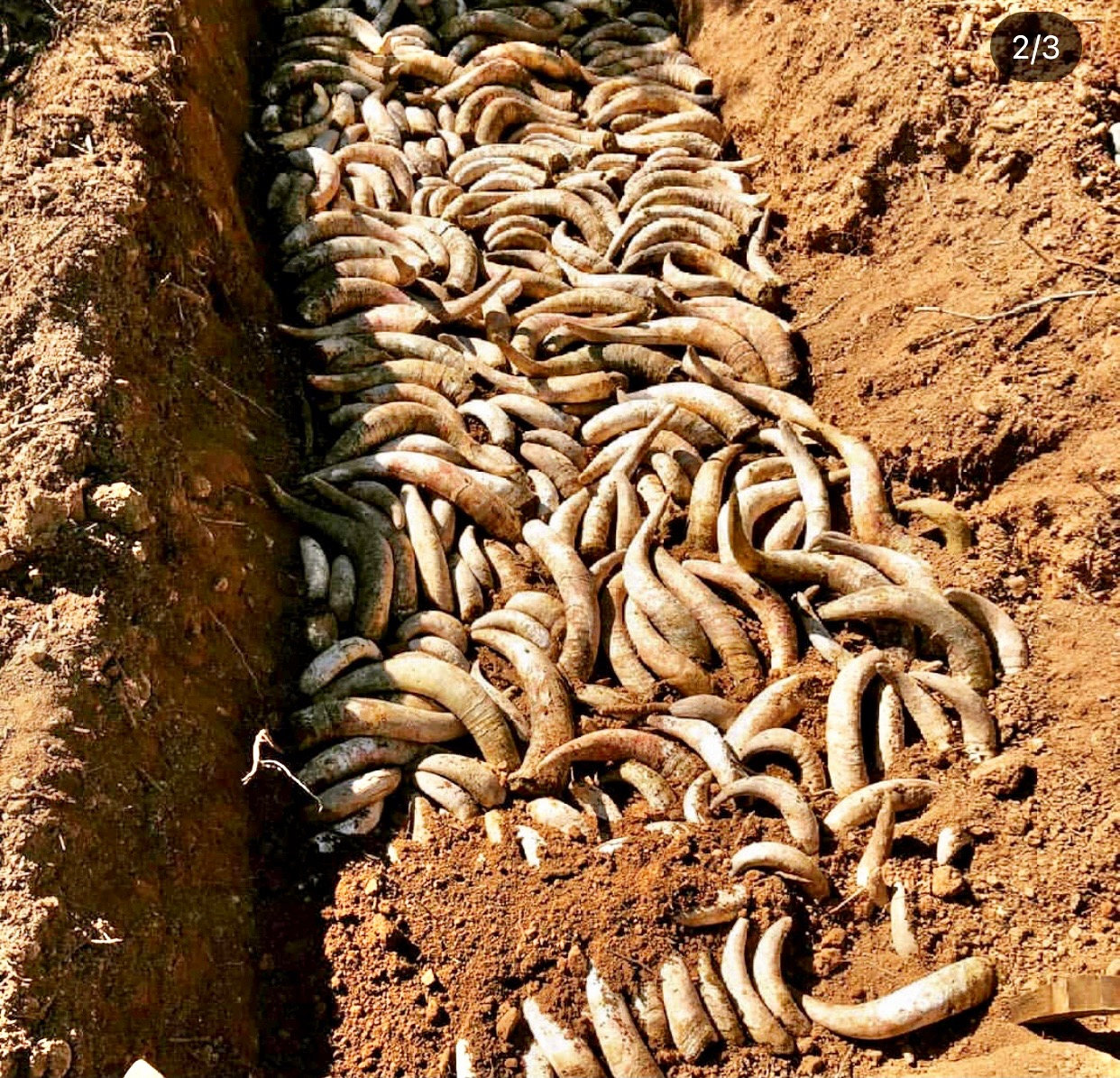 Burying manure-filled cow horns as part of the biodynamic preparations.
Burying manure-filled cow horns as part of the biodynamic preparations.
Have you practiced organic and biodynamic farming since the beginning? Are you certified?
When we started, we converted all the farms to organic farming and after a few years we introduced biodynamic practices, now more than 10 years ago. We are accredited by an association of biodynamic farmers of Catalonia, of which we are a part of, Terradinàmica.cat.
Why is it important to you to farm biodynamically?
We believe biodynamics is the way to cultivate, taking into account all the beings that live on the farm, from microorganisms, grasses, trees, mammals, birds, to the influences of the planets and constellations, which also form part of the ecosystem. For us this concept is very important.
Can you talk about the terroir of your vineyards and the grapes you grow there?
The soil of the vinyards is calcareous. We are just 20 km from the sea, the region has Mediterranean weather with a maritime influence. The topography of the place makes the maritime influence stronger and the penetration of the cold air more difficult. The median temperatures of the year are from 13 to 16 C (55-60 F), the summer is dry and warm. The rain is limited to 500-600 mm (20-24 inches) each year. The wind is usually during the winter.
All the vines and the crops came from our family. Before us were our parents who cultivated the vineyards. Approximately ten years ago, we started to be in charge of the vineyards and all of the others crops of the farm. The first step that we made was to start to cultivate according to ecological and biodynamic principles. At the beginning we sold the grapes to the agricultural cooperative of our village, and when we could make our own winery, we started to make our wines.
 We grow the vines in a valley next to a stream, the soil is clear, calcareous and with the persistence of river pebbles. We have old vines of 65 years old (Macabeu and Cartoixà), 50 years old (Vinyater), 35 years old (Vinyater and Macabeu), 30 years old (Cabernet), 25 years old (Ull de Llebre), and 20 years old (Macabeu). We also have young vines that we planted four years ago (Malvasia de Sitges, Cartoixà and Garnatxa).
We grow the vines in a valley next to a stream, the soil is clear, calcareous and with the persistence of river pebbles. We have old vines of 65 years old (Macabeu and Cartoixà), 50 years old (Vinyater), 35 years old (Vinyater and Macabeu), 30 years old (Cabernet), 25 years old (Ull de Llebre), and 20 years old (Macabeu). We also have young vines that we planted four years ago (Malvasia de Sitges, Cartoixà and Garnatxa).
We are interested in working with local varieties, this is the reason why we are now planting new vines.The grape varieties we have are traditional from the region. We are recovering some almost extinct varieties such as the Vinyater, the Malvasia de Sitges and the Trepat. We also have the white varieties of Macabeo and Cartoxà (Xarel·lo) and red of Grenache, Tempranillo and Cabernet. Vinyater is a grape traditionally cultivated in the Alt Camp region, nowadays only few hectares of vinyater remains in the region. Our region is especially famous for making grapes for Cava and years ago when the varieties for the Cava were selected, Vinyater (like others traditional varieties) was not selected. This is the reason why farmers have not planted more Vinyater, and when the vines became old they uprooted them.
Our family conserved two vineyards of Vinyater, one is 50 years old and the other is 35 years old, and we've started to try to make wine with this variety. We didn’t know another winery who worked with Vinyater and we didn’t know any wines made of Vinyater, but for us it was a challenge. We started to blend the Vinyater wine with the Macabeu wine to make the Llunàtic wine. We saw that Vinyater is a grape that maintains the acidity so it was perfect to blend with Macabeu.
After four years of selling the Llunàtic wines, people started to have an interest in Vinyater and so we decided to make a monovarietal wine of Vinyater. We were looking for the origin of Vinyater and we found the same name in the coast of Catalonia and Valencia. And similar names in Portugal (vinhal, vinhao) and Corsica (ua di vigna). The description of the Vinyater grape that we found in a book called Dictionary of the Names of the Vines and Grapes is: “White grape of a strong leaf and sweet juice. The best grape to keep and also good for making wine.”
What types of vessels do you use to age your wines?
We have stainless steel tanks for the fermentation of wines and barrels of chestnut and French oak for aging.
How many bottles of wine do you make each year and what percentage of them are exported?
We are currently making about 25,000 bottles and export 70%.
Which regional dishes do you pair with your wines?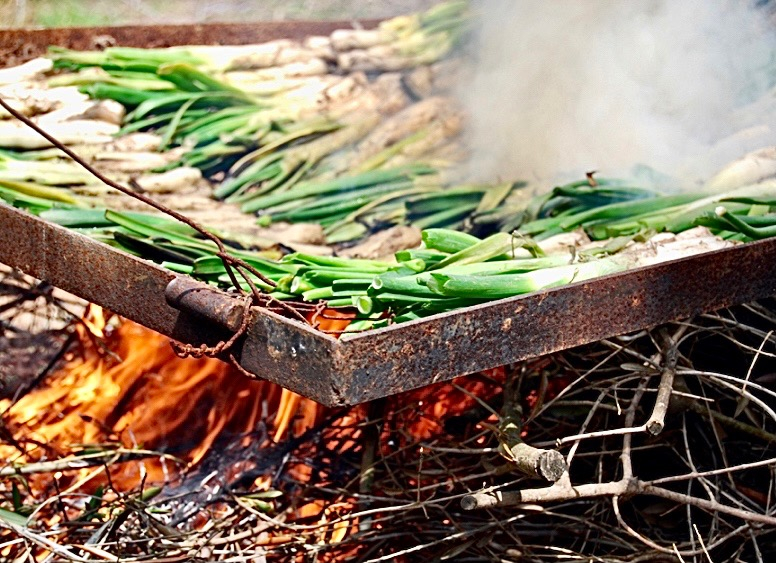 In our region we have a typical dish that we cal calçots, made with a local type of green onion and a sauce, and it’s very common to pair the dish with red wine. We pair white wine with goat cheese, mediterranean fish, salads, white meat, and hazelnuts. We also pair red wine with roast meat, barbecue meat (especially lamb and goat), mature cheeses and delicatessen pork meat (especially cured ham that we call “jamón”).
In our region we have a typical dish that we cal calçots, made with a local type of green onion and a sauce, and it’s very common to pair the dish with red wine. We pair white wine with goat cheese, mediterranean fish, salads, white meat, and hazelnuts. We also pair red wine with roast meat, barbecue meat (especially lamb and goat), mature cheeses and delicatessen pork meat (especially cured ham that we call “jamón”).
What else do you grow on your land besides grapes?
We work on six different plots, located around Valls totaling about 15 hectares. We grow vines, olives, almonds and hazelnuts in an agro-ecological manner, and following biodynamic principles. We also produce hay, carob, vegetables, and fruits for our own use.
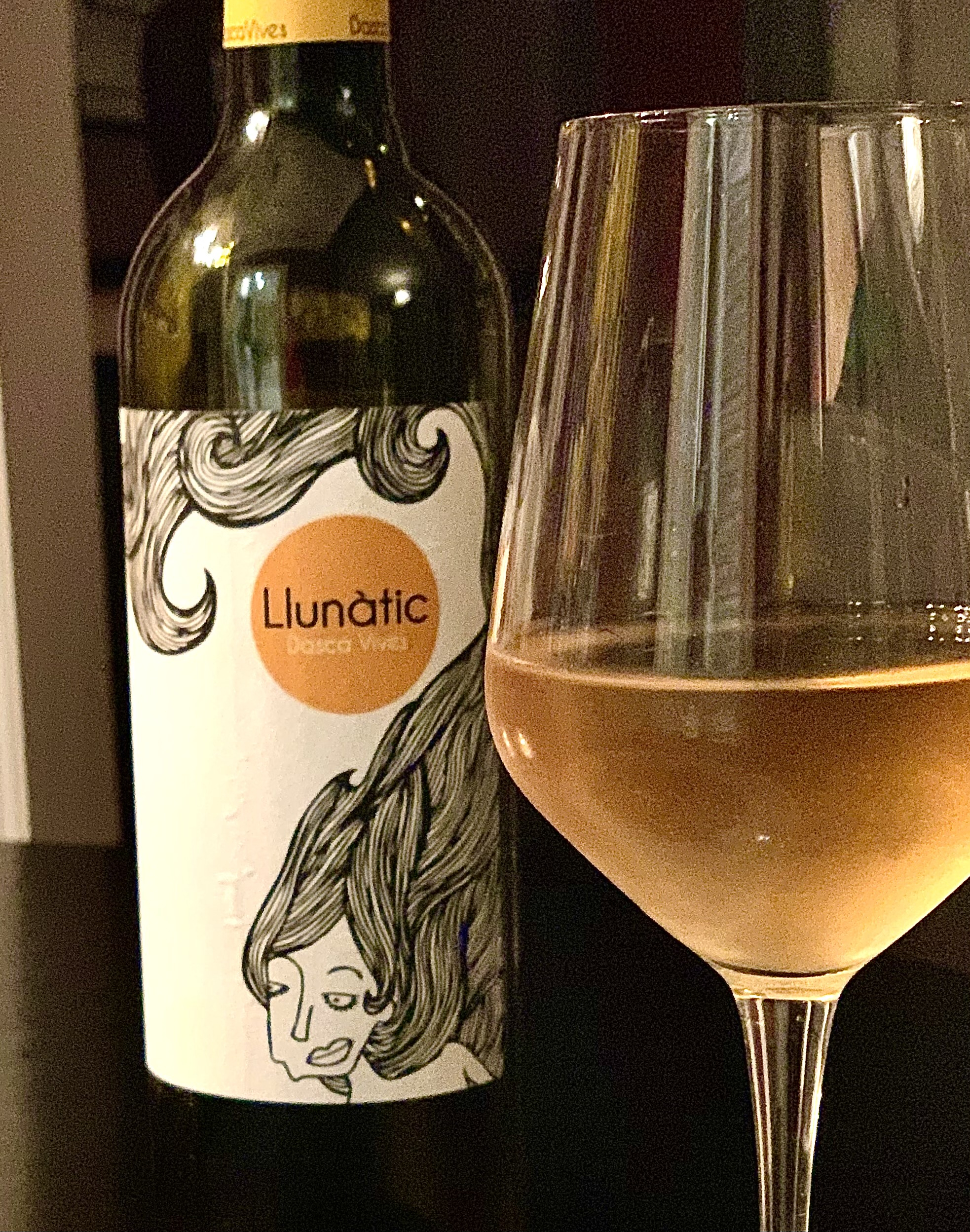 Can you tell us about the beautiful labels of your wines?
Can you tell us about the beautiful labels of your wines?
An artist friend of ours who studies illustration designs our labels. When we need a new label for a new wine, we explain to her why we make this wine and the sense of the wine and she thinks about it for days or weeks and finally she makes a new label. She knows us and our philosophy very well and it is interesting how she can capture the meaning of the wine.










